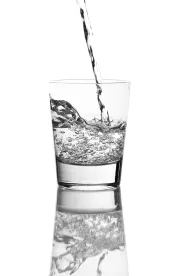A familiar list of states[1] are suing the Trump administration for revising the “waters of the United States” definition that is used to create the Clean Water Act (“CWA”) regulatory programs. The lawsuit is pending before the U.S. District Court for the Northern District of California. California v. Andrew Wheeler, Civil Action No. 3:20-cv-03005. There is also a predicable list of the other states[2] in the litigation supporting the “Navigable Waters Protection Rule: Definition of the United States” promulgated on April 21, 2020. 85 Fed. Reg. 22,250. While we await the impact of litigation and ruling on the request for a stay, the rule becomes effective on June 22, 2020.
The complaint for declaratory and injunctive relief in this litigation provides a road map for the legal and regulatory challenges ahead for the regulated community and agencies implementing CWA programs that rely on the definition for “Waters of the United States” aka WOTUS. The following provides insights as to how to support a strong CWA with the new WOTUS definition.
Upset of Existing Regulatory Programs. Challenging states/cities express concern over regulation of discharges to WOTUS (NPDES), water quality standards (TMDLs), 401 certifications (NWPs), and control of oil spills (SPCC) as the result of the new WOTUS definition. These are the programs that are relied upon by the regulated community to operate, maintain compliance, and develop new facilities.
Those seeking CWA permits/authorizations pursuant to the new WOTUS rule should consider enhancing their public submittals with documentation supporting policy decisions as protective of WOTUS uses. Voluntary reports, studies and data demonstrating protections and regulatory successes, in addition to routine reporting and recordkeeping, would be constructive in building confidence in the program changes and in defending against regulatory and statutory challenges.
Too Narrow a Definition. Challengers assert the new definition for WOTUS is narrow and excludes “waters long understood as within CWA’s protections.” They assert that ephemeral streams and many wetlands are excluded. The multi-step deliberative process that the former WOTUS regulatory program embraced resulted in the unfortunate inability to make timely decisions about regulatory authorizations. The tangible impact of the clarity of the new definition is the ability to engage in thoughtful analysis and decide how best to manage WOTUS protections.
In support of the clarity found in the new WOTUS rule, there is a need to demonstrate that the definition promotes the Clean Water Act mission. The regulated community needs to support the development of objective assessments that demonstrate this point to help educate about the effectiveness of the definition in meeting the CWS objective to “restore and maintain the chemical, physical, and biological integrity of the Nation’s waters.”
Rapanos “Significant Nexus” Concurrence. Challengers assert the U.S. Supreme Court Rapanos decision that sets forth Justice Kennedy’s “significant nexus” concurrence should have been maintained in the definition, rather than implement the plurality opinion as was done in the new WOTUS definition.
The WOTUS rule of 2020 notes that “Since Rapanos, litigation has continued to confuse the regulatory landscape. See, e.g., ECOS Memorandum at 2-23. The Supreme Court also has twice weighed in on topics related to the agencies' implementation of their authorities under the CWA to help clarify federal authority in this area. In each case, members of the Court noted the longstanding confusion regarding the scope of federal jurisdiction under the CWA and the importance of providing clear guidance to the regulated community.” 85 Fed. Reg. 22,250, 22,257.
The CWA becomes a statute unable to move if its programs are not capable of implementation, as the “significant nexus” analysis demonstrated. The regulated community can facilitate this issue by working with all stakeholders to develop in the near-term reports and analyses about the measurable successes of the WOTUS definition rule.
Neighbor Jurisdiction Impacts. Challengers express concern about jurisdictions upstream that may not be as protective of water adversely impacting downstream jurisdictions. They assert a need for a national floor for protecting water to avoid adverse impacts on downstream states.
The regulated community has a shared interest with the challengers in a CWA regulatory program that is dependable and has reliable outcomes. The difference in perspective is the challengers do not have confidence in states’ abilities to protect their waters, although all states are required to demonstrate effective CWA programs to the federal agencies. The regulated community needs to work in partnership with the state and federal agencies to support successful outcomes to refute the fear that downstream jurisdictions must be concerned.
Flow in a typical year. A tributary, lake, pond, or impoundment must contribute flow in a “typical year” directly to traditional navigable waters (e.g., through other tributaries, lakes, ponds, impoundments or adjacent wetlands). Tributaries must be either perennial (continuously flowing all year round) or intermittent (continuously flowing during certain times of the year and not just in response to precipitation). The challengers assert the definition for typical year is not well articulated. “Typical year” is defined to mean “when precipitation and other climatic variables are within the normal periodic range (e.g., seasonally, annually) for the geographic area of the applicable aquatic resource based on a rolling thirty-year period.” The 2020 Rule does not identify which “other climatic variables” should be considered, or what is the “geographic area of the applicable aquatic resource.”
The challengers share with everyone a distaste for vague outcomes, a common human sentiment. The previous WOTUS rule encompassed a myriad of steps embedded with complexities that defied any reliable or predictable outcome. The need to define “typical year” to create a comprehensible result falls well within the acknowledged need for common sense policy.
Excluded Waters. The challengers assert that the WOTUS definition excludes: ephemeral waters (those flowing only in direct response to precipitation) and their adjacent wetlands, “interstate” waters as a separate category of the “waters of the United States,” and therefore excludes many waters that cross state borders; and many wetlands that are near other jurisdictional waters but lack a physical or surface hydrological connection to them.
All stakeholders need an operable method to delineate a definition for WOTUS for the purpose of applying the CWA programs. Objecting to a program that is unclear is a valid concern when working to promote a sustainable Clean Water Act. Working against regulatory clarity seems misguided. Leadership is welcomed in educating about sustainable regulation as opposed to stalled regulation.
[1] The following states have sued EPA and the Army Corps of Engineers over the recent definition for “waters of the United States.” Plaintiffs are: California, New York, Connecticut, Illinois, Maine, Maryland, Michigan, New Jersey, New Mexico, North Carolina, Oregon, Rhode Island, Vermont, Washington, Wisconsin, Massachusetts, Virginia, the North Carolina Department of Environmental Quality, the District of Columbia, and the City of New York.
[2] Intervenors for the Defendant Federal Agencies include: Pacific Legal Foundation, Georgia, Wyoming, Alabama, Texas, Indiana, Mississippi, Alaska, Idaho Department of Environmental Quality, Oklahoma, Arkansas, Idaho, Kansas, Kentucky, Louisiana, Missouri, Montana, North Dakota, South Carolina, South Dakota, Utah, and West Virginia.




 />i
/>i


